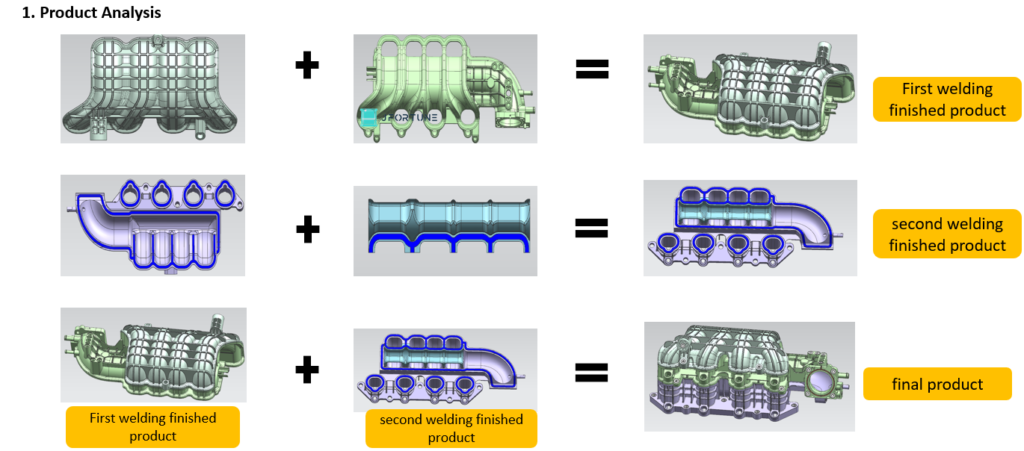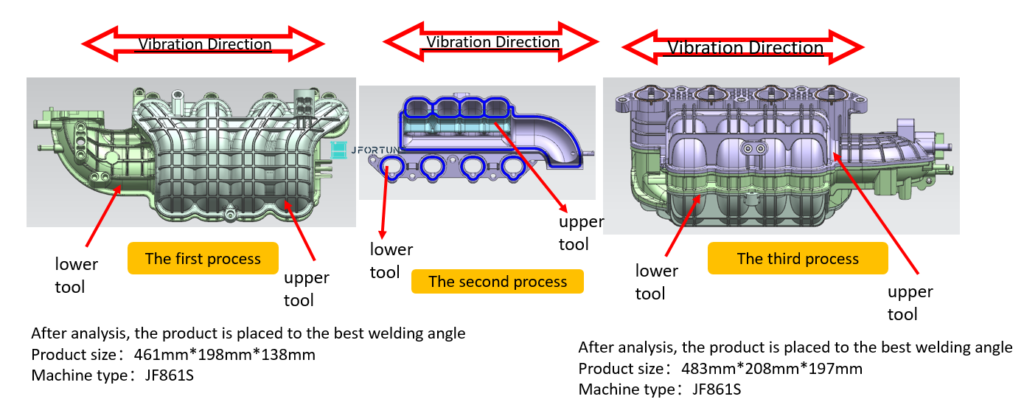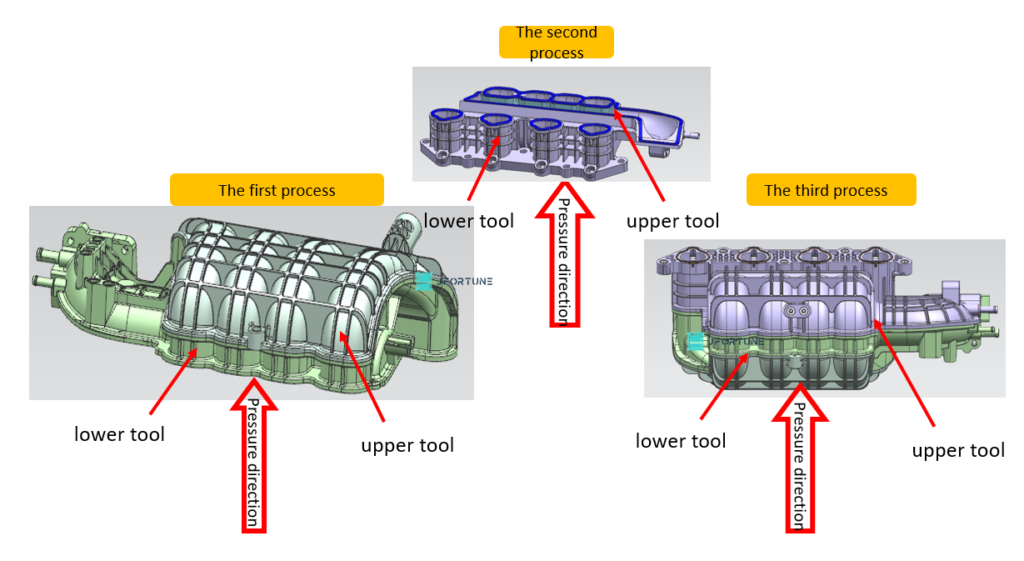Intake Manifold: An intake manifold is a crucial component in an internal combustion engine. It sits on top of the engine and distributes air (and sometimes fuel) to the engine’s cylinders. It plays a vital role in the engine’s performance by optimizing the flow of air and fuel mixture.
Manifold Vibration Welding: it incorporates vibration welding technology to join the various plastic or composite components that make up the manifold. This could be done to create a secure and leak-free connection between the manifold parts.
Intake manifold vibration welding requires step-by-step welding
Manifold Vibration Welding:
Vibration welding is a welding process used to join two plastic components together. It is also sometimes referred to as linear or orbital vibration welding. This technique involves the following key steps:
Preparation: The two plastic parts to be joined are carefully prepared, with one part typically having a protruding feature that fits into a corresponding cavity or groove in the other part.
Clamping: The prepared parts are clamped together within a specialized fixture or tooling.
Vibration: High-frequency vibrations are applied to one of the parts. These vibrations create friction at the interface between the two parts, generating heat.
Melting and Bonding: The heat generated by the friction causes the plastic material at the interface to melt. As the parts continue to vibrate, they are pressed together, and the melted material from both parts mixes and bonds. This results in a strong, hermetic, and durable weld.
Cooling and Solidification: Once the desired level of melting and bonding is achieved, the vibration stops, and the welded assembly is allowed to cool and solidify, creating a strong, seamless joint.
Vibration welding is commonly used in the automotive, aerospace, and consumer goods industries for joining plastic components such as automotive intake manifolds, instrument panels, and various plastic housings. It offers advantages such as high-quality welds, minimal material waste, and the ability to join complex shapes.



